When it comes to selecting a diamond engagement ring, the shape of the stone takes center stage for a good reason. It serves as the starting point for the entire design of the ring, making it a crucial consideration in creating the perfect piece.
Choosing the right diamond is an exciting part of the journey to create an ideal engagement ring. With numerous diamond shapes available, this article will specifically focus on the princess cut and cushion cut, comparing them to help you make an informed decision.
Throughout the article, we will explore the important characteristics of both diamond shapes, discuss their advantages and disadvantages, and provide guidance on what to consider when choosing between them.
So, let’s begin this exciting exploration without any further delay!
DESIGN YOUR OWN ENGAGEMENT RING: START WITH A SETTING OR START WITH A DIAMOND. IT’S REALLY UP TO YOU!
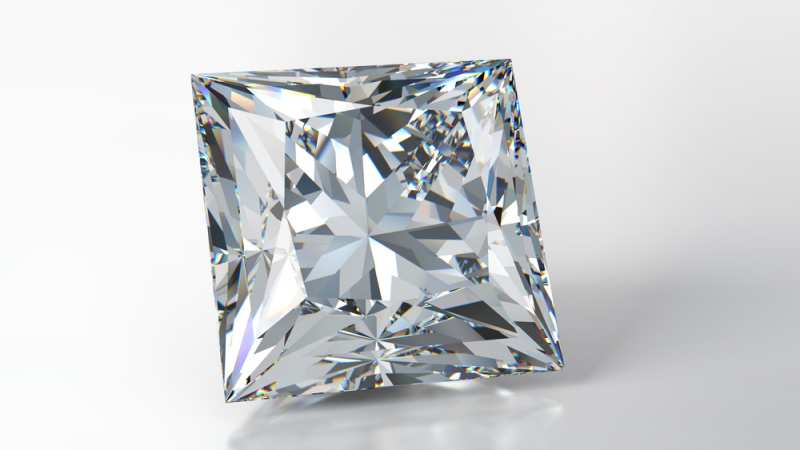
How A Princess Cut Diamond Is Shaped
The princess cut is a contemporary diamond shape known for its square shape and sharp, geometric lines. It features a pyramid shape with four beveled sides, creating a distinct and modern look.
The invention of the princess cut diamond can be credited to Israel Itzkowitz and Betazel Ambar, relatively recently in 1980. However, it draws inspiration from previous cuts such as the quadrillion cut and the French cut.
Today, the princess cut has gained popularity and is highly sought after.
What makes the princess cut unique is its ability to combine geometric precision with brilliant sparkle. Unlike other angular diamond shapes like the Asscher cut or emerald cut, which emphasize step-cut facets and produce flashes of light, the princess cut exhibits a remarkable amount of fire and brilliance. It stands out among geometric square diamond cuts as one of the most dazzling options, comparable to the round brilliant or cushion cut diamonds.
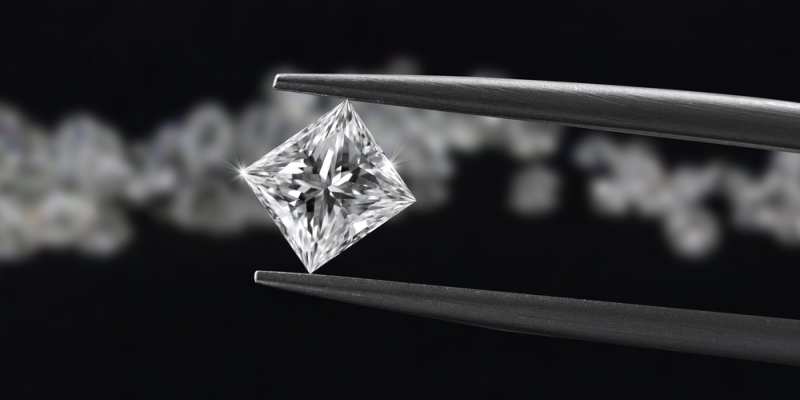
Princess Cut Facet Patterns
To achieve the signature brilliance of a princess-cut diamond, a high number of facets is essential. Typically, princess-cut diamonds can have either 56 or 57 facets, depending on the specific stone.
Now, let’s delve into the technical details. The princess cut offers variations in how the crown and pavilion are cut.
The pavilion can feature two, three, or four chevron-patterned facets. The more sets of chevron facets there are, the greater the diamond’s brilliance. Each facet configuration also disperses light differently.
A princess-cut diamond with two chevron-patterned facets produces powerful flashes of sparkle, resulting in a very bright appearance. However, the scintillation level may be lower, making it suitable for those seeking a less lively stone.
On the other hand, a three chevron-patterned facet configuration enhances the reflection of prominent flashes of light while maintaining a higher level of overall brilliance. This strikes a desirable balance between dispersion and sparkle.
For a very high scintillation level and intense brilliance, some princess-cut diamonds feature four chevron-patterned facets. The smaller facets in this configuration create a “crushed ice effect,” with intense fire but less distinct light dispersion.
Moving on to the crown, it is typically cut in a style that falls between two options. The first style involves bezel facets extending from the corners of the table to the corners of the diamond’s girdle. The second style, known as the French corner, showcases table facets pointing toward the corners of the stone.
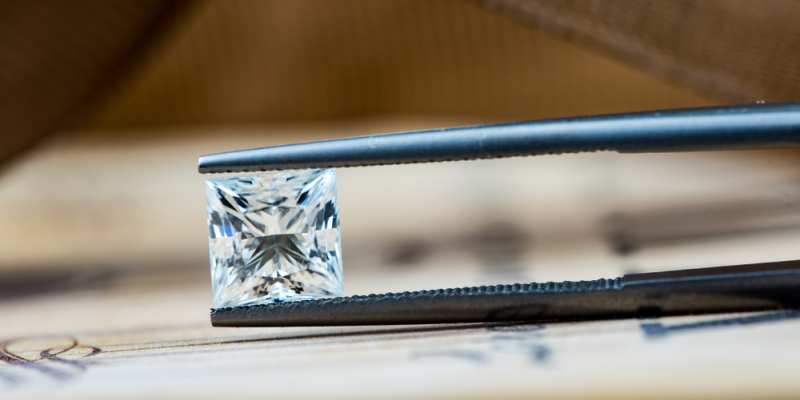
Princess Cut Ratios
At first glance, a princess-cut diamond may appear perfectly square, but in reality, it is usually slightly rectangular in shape.
The optimal ratio for princess-cut diamonds is generally around 1.00:1.05. This ratio helps determine if the diamond has a slight rectangular shape.
Some individuals also appreciate princess-cut diamonds with a ratio of 1.06:1.12, which highlights a slightly more pronounced rectangular shape.

What Side Stones Best Compliment Princess-Cut Diamonds
For a princess-cut diamond, it complements the overall design to pair it with angular side stones. Smaller princess-cut diamonds or baguette-shaped diamonds would be a great choice for this purpose.
Alternatively, tapered baguette diamonds can be used, which create a narrower and more delicate band as the diamond’s width decreases towards the outer edges.
To enhance the geometric and brilliant nature of the princess-cut diamond, it pairs well with fancy-shaped side stones such as step-cut trapezoids or step-cut bullets. These shapes ensure that the angular lines of the princess-cut are beautifully complemented.

What To Consider When Purchasing A Princess-Cut Diamond
When selecting a princess-cut diamond, it’s important to consider the traditional factors of cut, carat, color, and clarity in relation to the design of the ring.
If you prefer a warm-toned metal like rose or yellow gold, color grades G and H will appear exceptionally white against the warm hues of the metal.
For platinum or white gold settings, lower color grades may exhibit noticeable yellow tints in the diamond. It is recommended to choose a gemstone with a clarity grade of at least SI1 to ensure magnificent brilliance and fire.
When it comes to princess-cut diamonds, it’s best to avoid gemstones with a table percentage greater than the depth percentage.
There is no definitive length-to-width ratio that is considered right or wrong for a princess-cut diamond. It ultimately depends on your personal preference and the aesthetic you desire.
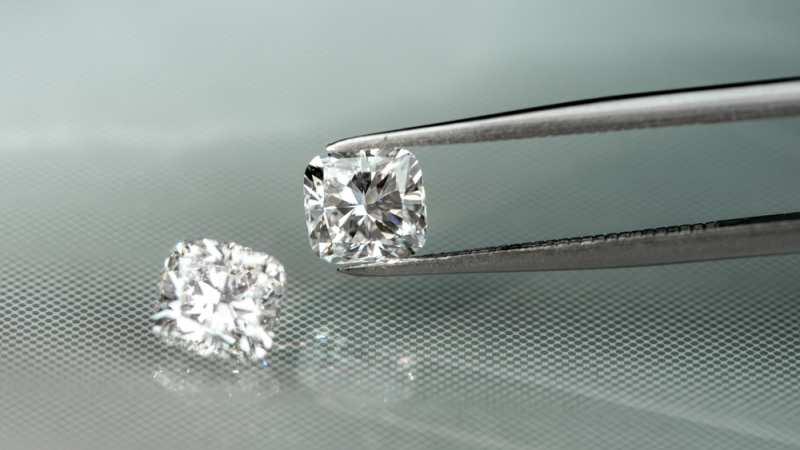
How A Cushion Cut Diamond Is Shaped
The exquisite cushion diamond is known for its distinctive rounded square shape. Its origins can be traced back to the 18th century, although it took on a different form at that time.
The cushion cut’s predecessor was the Old Mine cut, developed by the skilled polisher Vincent Peruzzi. By increasing the number of facets in a round rose cut, he created a rounded square shape with 33 facets known as the Old Mine cut.
Jewelers found the rounded square shape easier to cut by hand compared to a round diamond, leading to its popularity. Today, modern cushion diamonds feature 58 facets that enhance their sparkle and fire.
For nearly two centuries, the cushion cut diamond held the position of the most favored diamond shape, similar to today’s round brilliant cut. However, its popularity declined during the 19th century before experiencing a significant resurgence in recent times.
Marcel Tolkowsky played a crucial role in revitalizing the cushion cut diamond. His refinements to the cut resulted in optimal proportions, including narrowing the culet, expanding the table, and reducing the crown height.
Thanks to Tolkowsky’s research, the cushion cut diamond now exhibits remarkable brilliance. It is a unique shape that combines elements of roundness and geometric lines within the same gem.
Although the cushion cut diamond bears some resemblance to the radiant cut, it features fewer angles and lacks the distinctive corners. Instead, it has a softer, more rounded shape.
The name “cushion” is derived from the diamond’s resemblance to a cushion or pillow, reflecting its gentle square shape.
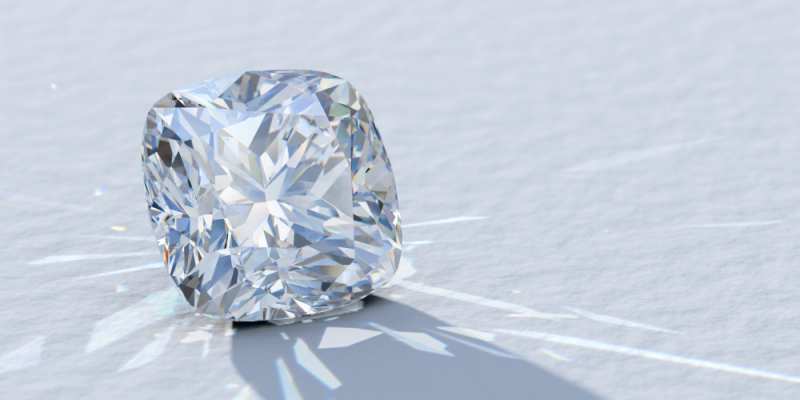
Cushion Facet Patterns
Cushion-cut diamonds are characterized by their 58 facets, which contribute to their distinct and vibrant fire. The term “fire” refers to the colorful display of dispersed light as it interacts with the diamond’s facets.
The pavilion of a cushion cut typically exhibits one of three different patterns, featuring kite-shaped facets numbering either four or eight on the lower portion of the stone.
Traditional cushion cuts showcase four to eight facets in the pavilion, creating a captivating “hearts and arrows” pattern.
However, there are also modified cushion-cut diamonds available, featuring an additional row of facets. These modified cushion cuts create a stunning “crushed ice” effect, known for its exceptional scintillation.
While modified cushion cuts may exhibit less brilliance compared to round brilliant cuts, they compensate with a remarkable display of fire.
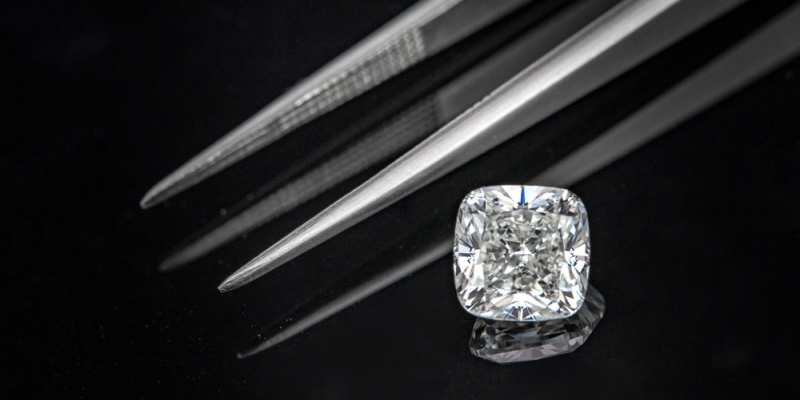
Cushion Cut Ratios
Cushion-cut diamonds offer various ratio variations in their main shape. They can range from a shorter square shape to a more elongated form resembling a rectangle, known as the elongated cushion diamond.
The ratio of a cushion-cut diamond is an important factor to consider as it determines the diamond’s square shape, if that is your desired outcome.
If the ratio is poor, the cushion-cut diamond may resemble a round brilliant cut or a radiant cut instead.
The choice of style for your cushion cut diamond is purely subjective. You can opt for a classic square cushion or go for the elongated shape, depending on your personal preference.
For a square cushion cut, the ideal ratio would be around 1.00:1.03. Ratios ranging from 1.03:1.05 also create beautiful proportions.
If you prefer a slightly rectangular-shaped cushion diamond, an optimal ratio would be around 1.15:1.20. However, a ratio of 1.20:1.30 would still provide an elegant elongated effect.
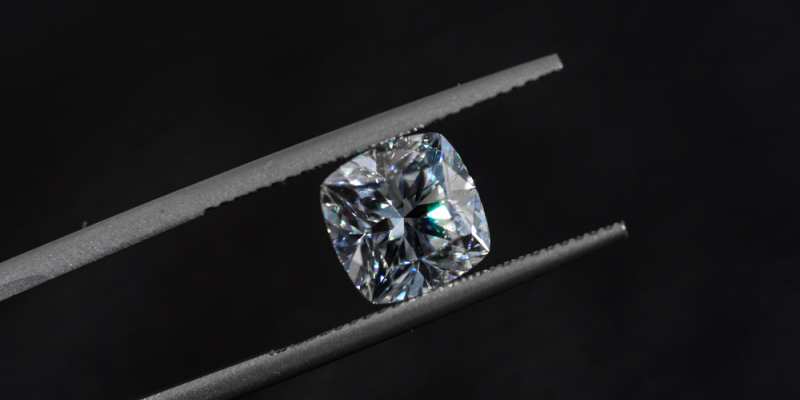
What Side Stones Best Compliment Cushion-Cut Diamonds
When it comes to designing a ring with a cushion-cut diamond, the options are abundant. The versatility of the cushion cut allows for various stunning combinations.
One appealing design idea is to feature the cushion-cut diamond as the centerpiece, complemented by two round diamonds as side stones. This combination creates a harmonious and elegant look.
Alternatively, pairing the cushion-cut center stone with two smaller cushion-cut diamonds can result in a striking and balanced design. Another option is to combine the cushion-cut diamond with other fancy cut gems, such as trapeze-shaped diamonds or half-moon cut diamonds, for a unique and eye-catching arrangement.
The key is to explore different combinations and find the one that resonates with your personal style and preferences.
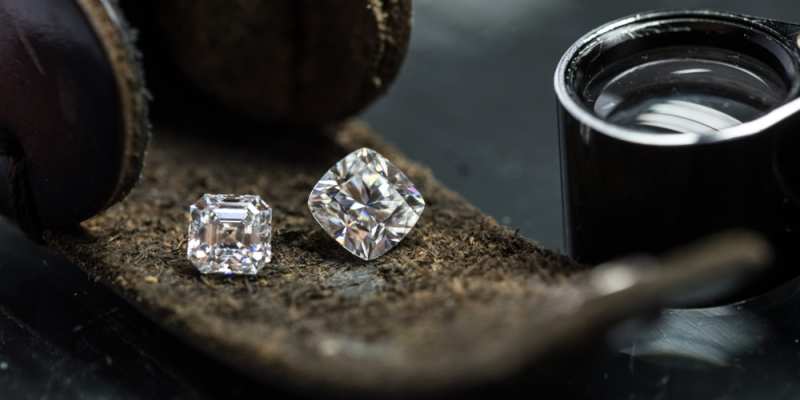
What To Consider When Purchasing A Cushion Cut Diamond
When purchasing a cushion-cut diamond, it’s crucial to consider the traditional diamond criteria: cut, carat, color, and clarity. However, there are specific factors to keep in mind when evaluating the cut of a cushion-cut diamond.
Firstly, the choice between a classic or modified cushion cut is a matter of personal preference. Similarly, deciding on a square or elongated shape depends on your individual taste and style.
Symmetry is of utmost importance when it comes to cushion-cut diamonds. A well-balanced diamond with excellent symmetry will appear more visually appealing. It should exhibit mirrored sides and corners, creating a harmonious and pleasing curve.
Additionally, the thickness of the diamond’s girdle is a significant consideration. The girdle should not be too thin, as this could make the stone susceptible to damage. Striking the right balance in girdle thickness ensures the durability and longevity of the diamond.
By carefully assessing these factors, you can make an informed decision and choose a cushion-cut diamond that meets your aesthetic preferences and quality standards.
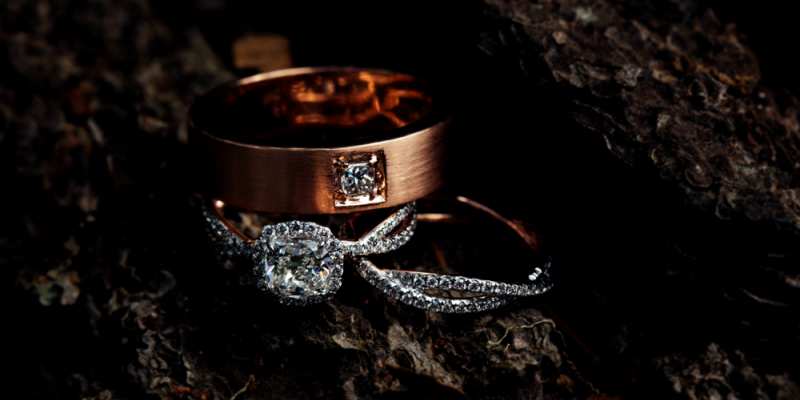
Princess Cut Vs. Cushion Cut – Which One Should You Get?
When it comes to choosing between a princess cut and a cushion cut, both options have their unique qualities that make them stunning choices for an engagement ring. Let’s recap some key information to help you make a decision:
The princess cut is known for its stylish and contemporary appeal. Its sharp, angular lines exude elegance and a sense of modernity. This cut offers remarkable scintillation and is often more affordable than a round brilliant cut diamond of the same carat weight.
On the other hand, the cushion cut evokes a sense of tradition and nostalgia, reminiscent of vintage styles and the Art Deco era. It possesses a timeless beauty and showcases excellent fire and scintillation. If you appreciate the captivating “crushed ice” effect in diamonds, the cushion cut is an excellent choice.
Furthermore, the cushion cut offers versatility, allowing you to find a stone that is unique to you and your partner. It is also a budget-friendly option, typically costing 15-20% less than a round brilliant cut diamond of the same carat weight.
Ultimately, the choice between a princess cut and a cushion cut depends on your personal preferences and the style you resonate with the most. Consider the aesthetic appeal, the desired level of brilliance and fire, and your budget to make the decision that feels right for you.


